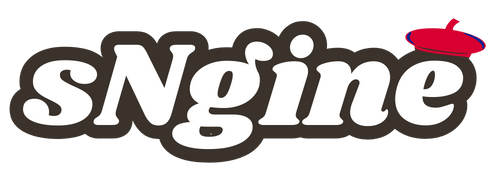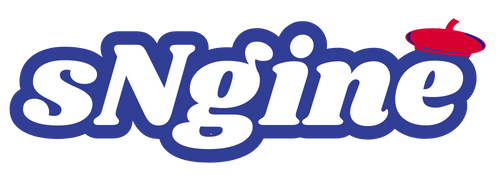In modern industrial environments, cleaning and surface preparation have evolved significantly. Among the latest innovations, the portable laser cleaning machine has emerged as a transformative solution. This technology is changing the way industries approach rust removal, paint stripping, and surface conditioning, offering precision, speed, and adaptability that traditional methods cannot match.
A portable laser cleaning machine uses focused laser energy to remove contaminants, oxides, or coatings from various surfaces. Its portability allows technicians to bring the cleaning process directly to the equipment, large structures, or hard-to-reach areas without dismantling machinery. Unlike abrasive or chemical cleaning methods, laser cleaning ensures minimal contact with the substrate, preserving the integrity of the underlying material while effectively removing unwanted layers.
Industries such as automotive, aerospace, shipbuilding, and manufacturing have found this technology indispensable. For instance, in automotive maintenance, a portable laser cleaning machine can efficiently remove rust or old paint from metal parts without generating harmful chemical waste. Aerospace components, which often involve delicate alloys and complex geometries, benefit from laser cleaning because it can access intricate surfaces without causing damage. Shipyards utilize portable laser cleaning to maintain hulls and remove rust layers, reducing downtime and improving safety for workers.
One of the most remarkable aspects of a portable laser cleaning machine is its precision. Operators can target specific areas without affecting surrounding surfaces. This precision reduces material waste and allows for selective cleaning, which is especially important in high-value industries where preserving structural integrity is crucial. Additionally, the ability to adjust laser intensity and focus makes it versatile for various materials, including metals, composites, and ceramics.
The environmental impact of portable laser cleaning machines is also significant. Traditional cleaning methods often involve chemical solvents, abrasive blasting, or water-intensive techniques, all of which produce waste and can harm ecosystems. Laser cleaning, on the other hand, is a dry process. It produces minimal residue, often just small particles of the removed material, which can be collected and disposed of safely. This reduces environmental contamination and eliminates the need for harsh chemicals.
Safety in industrial cleaning is another important factor. Portable laser cleaning machines operate with controlled laser beams, reducing the risks associated with sparks, dust, or toxic fumes common in conventional methods. Operators must still follow safety protocols, including protective eyewear and appropriate shielding, but the overall reduction in physical hazards makes laser cleaning a safer alternative in many work environments.
In terms of operational efficiency, portable laser cleaning machines excel by reducing downtime and streamlining maintenance schedules. Large structures or machinery no longer need to be disassembled for surface treatment. Instead, the cleaning process can be applied directly on-site, saving time and labor costs. Additionally, the rapid action of the laser beam allows for faster preparation of surfaces for painting, coating, or welding, contributing to overall productivity.
Maintenance of a portable laser cleaning machine is straightforward compared to other industrial cleaning equipment. Regular inspection of the optical components, ensuring proper cooling, and keeping the laser beam path free from dust and debris are sufficient to maintain peak performance. Its design often emphasizes mobility, allowing it to be easily transported between different work areas, which enhances operational flexibility.
Adoption of portable laser cleaning technology continues to grow as industries seek more sustainable and efficient methods of surface treatment. Companies investing in this equipment find that it not only reduces labor-intensive work but also improves the quality and consistency of results. As manufacturing and maintenance demands increase, the ability to clean precisely, safely, and efficiently becomes a competitive advantage.
Training operators to use a portable laser cleaning machine effectively is an essential part of its deployment. Understanding the correct settings for different materials, the optimal distance and speed for cleaning, and the safety measures involved ensures that the machine delivers the best results. Skilled operators can achieve consistent cleaning quality, minimize material damage, and optimize the cleaning speed.
Future developments in portable laser cleaning machines are likely to focus on enhancing power efficiency, further miniaturizing components for even greater mobility, and integrating smart controls for automated or semi-automated cleaning processes. As industries continue to demand faster, safer, and more environmentally friendly solutions, portable laser cleaning machines are well-positioned to become standard equipment across multiple sectors.
The versatility of a portable laser cleaning machine is one of its defining features. From removing corrosion and scale on metal surfaces to cleaning molds, tools, and delicate components, it addresses a wide range of cleaning challenges. Its non-contact approach ensures that surfaces prone to deformation or scratching are treated safely, making it suitable for high-precision applications.
In practice, portable laser cleaning machines are used in both small-scale workshops and large industrial facilities. Their adaptability allows companies to standardize cleaning procedures across multiple locations without relying on complex or labor-intensive methods. This consistency improves quality control and reduces the likelihood of errors associated with traditional cleaning techniques.
Technological advancements have also led to more user-friendly interfaces on portable laser cleaning machines. Operators can adjust settings with precision, monitor performance in real time, and even integrate with digital maintenance records to track cleaning cycles and surface conditions. This connectivity enhances workflow management and provides valuable data for predictive maintenance strategies.
The economic impact of adopting portable laser cleaning technology is notable. While the initial investment may be higher than conventional methods, the reduction in labor costs, chemical usage, downtime, and material waste contributes to a faster return on investment. Over time, companies can achieve substantial savings while maintaining high-quality surface treatment standards.
As industries embrace sustainability and efficiency, the portable laser cleaning machine represents a shift toward cleaner, safer, and more precise maintenance practices. Its combination of portability, adaptability, and environmental consciousness makes it a key tool for modern industrial operations. By reducing the need for chemicals, minimizing downtime, and providing unmatched precision, it sets a new benchmark for surface cleaning and preparation.
Final Thoughts: The portable laser cleaning machine is reshaping the way industries approach surface treatment. Its ability to combine efficiency, precision, and sustainability makes it an indispensable tool for a wide range of applications, from heavy industrial maintenance to delicate component restoration. Companies investing in this technology gain not only operational advantages but also a future-ready solution aligned with modern industrial demands.



